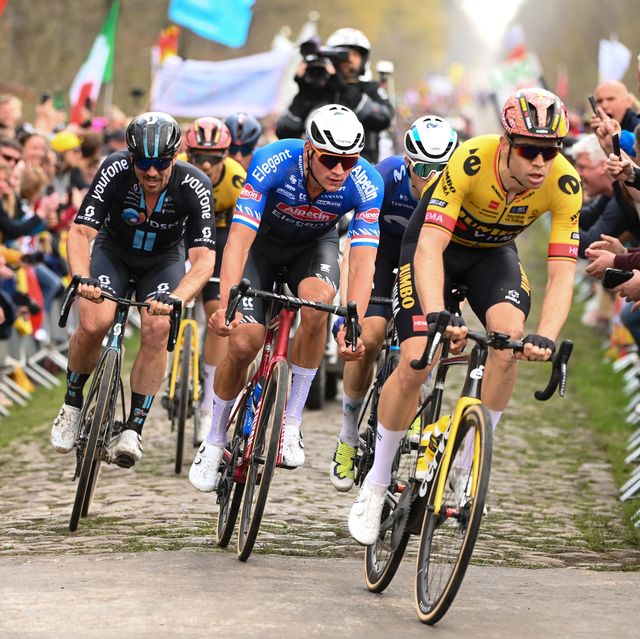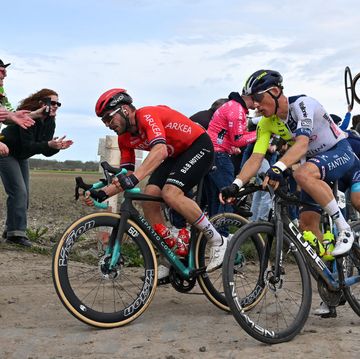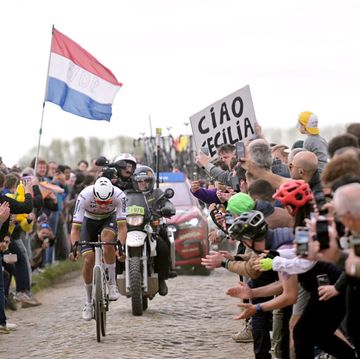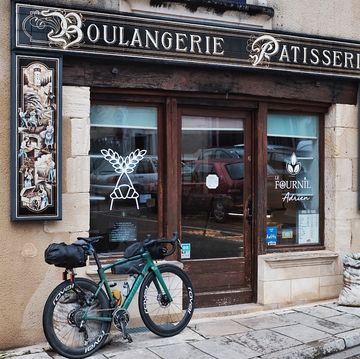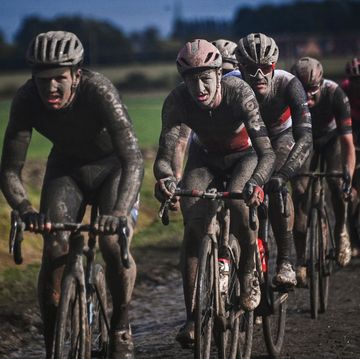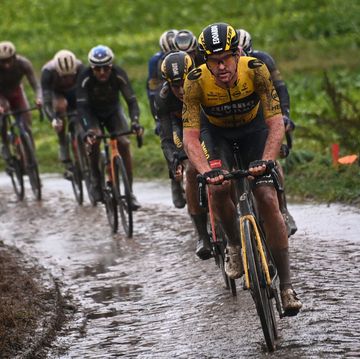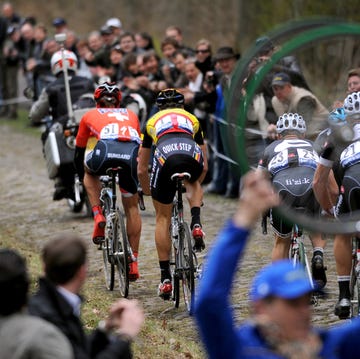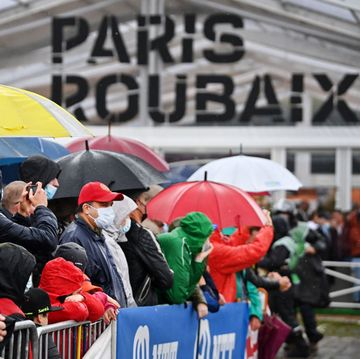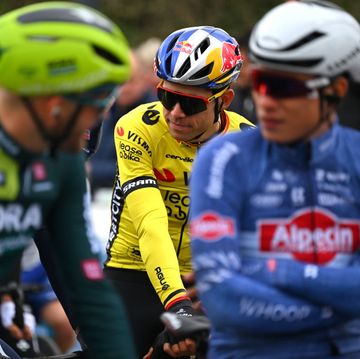Hell just got a lot trickier. In an effort to slow the peloton down heading into one of the most dangerous sections of the Hell of the North, Paris-Roubaix race organizers ASO have implemented a chicane that leads into the treacherous Trouée d’Arenberg.
According to a statement released by the race’s organizers, the safety measure was requested by the riders’ union, the Cyclistes Professionnels Assoicés, or the CPA.
“For safety reasons and following a request from the CPA, the Paris Roubaix organization is modifying the approach to the Trouée d’Arenberg,” race organizers said in a statement posted to X. “The route will take a chicane just before the entrance to the sector to slow the speed at which the riders enter the sector and limit the risk of crashes on the cobbles.”
The request was confirmed by CPA president Adam Hansen, who tweeted, “Riders reached (out), and we acted on their behalf. Now with a slower entrance to Arenberg, riders won’t be able to hit it with speed and momentum. It’s going to make this sector even harder than before.”
Riders were consulted and presented with a trio of options for a rerouting into the Arenberg. However, their first choice was apparently unusable due to a large hole in the road. ASO said they are committed to using that option in next year’s race.
Judging by the looks of a video retweeted by Mathieu van der Poel, the new chicane is certainly going to slow the racers down. And judging by MVDP’s comment, “Is this a joke?”, it makes you wonder how much information the riders had in that aforementioned consultation of the final design of the speed-calming measure.
That video, which was originally posted by the popular cycling account @ammattipyöräily, shows a first-person perspective of the chicane and its pair of narrow 90-degree turns and a 180-degree turn at the point in the race where positioning is most important. On top of all that turning, the chicane is quite narrow, just one traffic lane wide. This makes it seem that the idea behind such a drastic road feature is to create a bottleneck heading into the Arenberg, which will then force whichever riders are bunched together to string out as they head into the 2.3-kilometer sector.
As the Arenberg sector is only three meters wide, it is typically the first sector in which Paris-Roubaix can begin to be decided. Therefore, the fight for position heading into it is typically exciting and often dangerous.
Normally, riders hit the entrance of the Trouée d’Arenberg at around 60 km per hour (37 mph). Those speeds, combined with the change in surface and the fact that Paris-Roubaix is often run in wet conditions have led to dramatic crashes over the years.
But while the chicane should slow riders down significantly, there’s still going to be a massive fight for position heading into its dogleg, which is likely to create at least some chaos. And while crashing is never good, you could say that crashing on the tarmac is better than wrecking on the brutal, unforgiving pavé of the Trouée d’Arenberg.
After he outlined the implementation of the chicane, Paris-Roubaix race director Thierry Gouvenou, himself a former pro, told the media, “I’ve raced here twelve times. And twelve times I’ve arrived at the Trouée d’Arenberg wondering how I was going to get out.”
I guess this year, riders will be wondering how the hell they’re going to get in.
